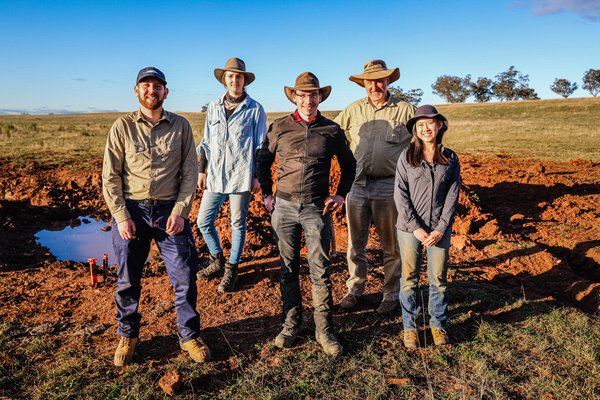Citizen scientists help date fossil sites
Date a Fossil allows you to be a palaeontologist from home! Scientists engaged 271 citizen scientists in the Date a Fossil project, and in doing so, uncovered hundreds of microfossils in a unique iron-rich fossil site located in McGraths Flat, central New South Wales, Australia.
Citizen science has played a pivotal and innovative role in uncovering microfossils at McGraths Flat, an 11 to 16-million-year-old fossil site in central New South Wales, Australia. Composed mainly of the iron-rich mineral goethite, McGraths Flat fossils provide a snapshot of what life looked like in a middle Miocene rainforest. It is thanks to the discovery of microfossils on the surface of McGraths Flat rocks that we know its age and its environmental history.

© Salty Dingo
However, identifying microfossils on the surface of rocks is not the most efficient means of gaining insights. Traditionally, microfossils are extracted from rocks using acid to dissolve the surrounding rock. After dissolving the rock, hundreds to thousands of microfossils can easily be extracted, collected, and identified by investigators. This method relies on the fossils and their surrounding rock having different compositions. The rock is dissolved away leaving the fossil for all to see – though this is not the case for all fossil sites. Some sites, such as McGraths Flat, have fossils and the surrounding rock matrix with a similar composition and so do not permit investigators to use traditional acid extraction methods.
This prompted researchers to develop a novel approach that utilises the power of citizen science to observe microfossils on the surface of these sedimentary rocks. Using automated scanning electron microscopy (SEM) acquisition techniques, researchers from the Australian Museum, University of New South Wales, and University of Canberra acquired a staggering 25,200 high-resolution images from the surface of three McGraths Flat samples, covering a total area of 1.85 cm². These images were made available to citizen scientists through the DigiVol citizen science portal, a collaboration between the Australian Museum and the Atlas of Living Australia, under an Australian Museum project entitled Date a Fossil, where 271 participants contributed their expertise. Together, they successfully identified 300 pollen and spores, more than enough information to determine the age and environmental setting in McGraths Flat.
The introductory video for the Date a Fossil project:
The success of this work showcases the power of citizen science in paleontological research. By engaging the public in the identification of microfossils on the surface of sedimentary rocks, researchers could more efficiently process a large image dataset. This study serves as an inspiration for future collaborations between scientists and the public, highlighting the potential benefits to palaeontology while teaching the public about the scientific process. The findings underscore the importance of citizen science in expanding our understanding of ancient ecosystems and unlocking the secrets of our planet's history.
Dr Tara Djokic, Scientific Officer, Palaeontology, the Australian Museum.
Dr Matthew McCurry, Curator, Palaeontology, Australian Museum.
Paul Flemons, Manager Citizen Science and Expeditions, Australian Museum.
More information:
- Djokic, T., Frese, M., Woods, A., Dettmann, M., Flemons, P., Brink, F. and McCurry, M.R., 2023. Inferring the age and environmental characteristics of fossil sites using citizen science. PloS one, 18(4), p.e0284388. https://doi.org/10.1371/journal.pone.0284388
- McCurry, M.R., Cantrill, D.J., Smith, P.M., Beattie, R., Dettmann, M., Baranov, V., Magee, C., Nguyen, J.M., Forster, M.A., Hinde, J. and Pogson, R., 2022. A Lagerstätte from Australia provides insight into the nature of Miocene mesic ecosystems. Science Advances, 8(1), p.eabm1406. https://doi.org/10.1126/sciadv.abm1406
Acknowledgements:
We thank the Etheridge Descendants, Australian Museum Research Institute and the Australian Museum Trust for funding support. Nigel McGrath kindly provided access to the fossil site. We greatly appreciate the valuable contributions made by volunteer citizen scientists. We acknowledge the traditional custodians of the land and waterways on which the McGraths Flat deposit is located, the Wiradjuri Nation People.













